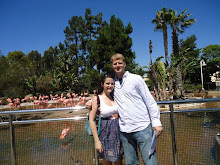
Most people know the ending of the story of Amelia Earhart. So, Fleming does not condescend to hold the story of the search for Amelia and her navigator Fred Noonan until the end of her book. She utilizes radio logs and stories of Americans picking up Amelia on their high- tech radios to generate an element of suspense.
I learned quite a bit from Fleming's account of Amelia Earhart, even though there was a time period as a child that I attempted to emulate Earhart by cutting my hair and wearing a leather jacket in the July heat. Amelia's father's drinking problem had a profound effect on her teen years and social development, according to Fleming. I knew that Amelia had broken up George Putnam's previous marriage to a woman named Dorthy. However, Fleming makes it feel like Amelia had no fault in the divorce. Perhaps in an effort to make the aviator look like a hero, Fleming rushes to excuse this poor personal behavior. On the other hand, Fleming does point out that Earhart did not take the man who installed her radio before her last flight seriously. Before she left, Amelia had only one lesson in using her radio. This adds an element of sadness, because a woman known for her whit and independence may have had the tool to save herself right at her fingertips but didn't know how to use it.
In the end, Fleming paints Earhart as a role model for girls. She does give her faults, openly stating that Earhart was not the most well-rounded pilot, that young people can learn from.
Not only is the lettering by Jessica Hische attractive and enticing, I believe that the style of this book gives readers added value. This in not simply a boring, sad narrative of a life lost. "Grey" pages tell the story of the disappearance of and search for Amelia Earhart. Chapters break her life into parts such as Little Amelia 1897-1908 or Fame 1927-1928. Kirkus Reviews said that "Handwritten notes, photos, maps and inquisitive sidebars (What did Earhart eat during flight? Tomato juice and chocolate) complete this impeccably researched, appealing package. A stunning look at an equally stunning lady."
Fleming proves her worth as a researcher and a biographer through her questioning of the accounts provided my Earhart's publisher and husband. Fleming says that many of the reports or the facts that are accepted about Earhart's life were generated to boost her image. Fleming also provides an extensive bibliography and pathfinder for finding out more about Amelia on the web. Source notes are organized by chapter and an index as well as picture credits are provided.
I would pull this book for a class working on a biography project if classes were researching heroes, specifically American heroes. I would also utilize this book if a teacher were talking about how radios worked in a science class. The "grey" pages I mentioned earlier discuss how radios and radio waves work. School Library Journal says "Ho-Hum history? Not in Fleming's apt hands. What could be a dry recitation of facts and dates is instead a gripping and suspenseful thriller."
Fleming's publisher provides a free curriculum guide at http://www.randomhouse.com/catalog/teachers_guides/9780375841989.pdf. Also, this book was a starred review for Bulletin of the Center for Children's Books, Horn Book, Kirkus Reviews, and School Library Journal.
Most of the learning from using this book in a classroom or reading it would be very motivational. I felt as if Fleming, through the story of Amelia was encouraging young readers to go further, learn more, and reach for the next thing no matter how far away that thing feels.
References:
Fleming, Candace. Amelia Lost: The Life and Disappearance of Amelia Earhart. New York: Random House Children's Books, 2011.




No comments:
Post a Comment